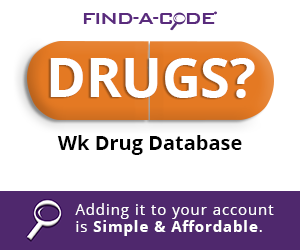
Alternative Payment Models (APMs) and Advanced APMs
January 16th, 2017 - Wyn Staheli**UPDATE 2017-01-20: CMS has released a new fact sheet regarding APMs. A link to this fact sheet is included in the References section at the end of this article.**
When CMS Released the NPRM regarding the Quality Payment Program (QPP), it included two payment tracks: MIPS and Advanced Alternative Payment Models (APMs). Accountable Care Organizations (ACOs), Patient Centered Medical Homes, and bundled payment models are some examples of APMs. So how do these payment models differ?
According to a fact sheet released by CMS:
Clinicians who take a extra steps towards care transformation—participating to a sufficient extent in Advanced Alternative Payment Models—would be exempt from MIPS payment adjustments and would qualify for a 5 percent Medicare Part B incentive payment.
To qualify for incentive payments, clinicians would have to receive enough of their payments or see enough of their patients through Advanced APMs. The participation requirements are specified in statute and increase over time.
Under the new law, Advanced APMs are the CMS Innovation Center models, Shared Savings Program tracks, or statutorily-required demonstrations where clinicians accept both risk and reward for providing coordinated, high quality, and efficient care. These models must also meet criteria for payment based on quality measurement and for the use of EHRs. The proposed rule lays out specific criteria for determining what would qualify as an Advanced APM. These include criteria designed to ensure that primary care physicians have opportunities to participate in Advanced APMs through medical home models.
The proposed rule includes a list of models that would qualify under the terms of the proposed rule as Advanced APMs. These include:
- Comprehensive ESRD Care Model (Large Dialysis Organization arrangement)
- Comprehensive Primary Care Plus (CPC+)
- Medicare Shared Savings Program—Track 2
- Medicare Shared Savings Program—Track 3
- Next Generation ACO Model
- Oncology Care Model Two-Sided Risk Arrangement (available in 2018)
Under the proposed rule, CMS would update this list annually to add new payment models that qualify as an Advanced APM. CMS will continue to modify models in coming years to help them qualify as Advanced APMs. In addition, starting in performance year 2019, clinicians could qualify for incentive payments based, in part, on participation in Advanced APMs developed by non-Medicare payers, such as private insurers or state Medicaid programs. The proposed rule also establishes the Physician-Focused Payment Technical Advisory Committee to review and assess additional physician-focused payment models suggested by stakeholders.
###
Questions, comments?
If you have questions or comments about this article please contact us. Comments that provide additional related information may be added here by our Editors.
Latest articles: (any category)
Artificial Intelligence in Healthcare - A Medical Coder's PerspectiveDecember 26th, 2023 - Aimee Wilcox
December 22nd, 2023 - Find-A-Code
December 19th, 2023 - Aimee Wilcox
December 12th, 2023 - Aimee Wilcox
November 14th, 2023 - Aimee Wilcox
October 26th, 2023 - Wyn Staheli
October 11th, 2023 - Wyn Staheli
